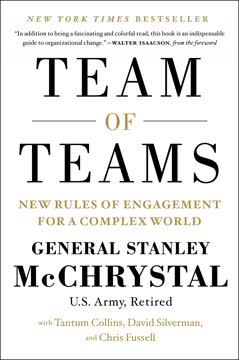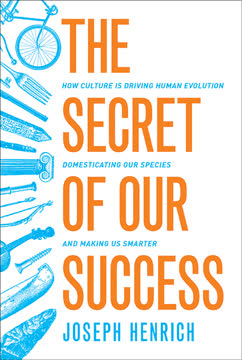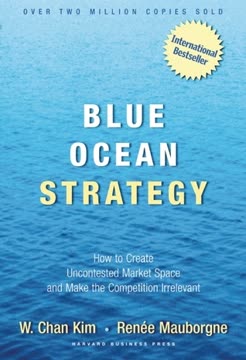نکات کلیدی
1. تغییر عمیق نیازمند درک فرآیندهای رشد و نیروهای محدودکننده است
"هر حرکتی در حال وقوع، مهار میشود."
رشد و محدودیتها در تعاملاند. تغییر سازمانی مانند یک سیستم زنده است که در آن فرآیندهای رشد تقویتکننده و نیروهای محدودکننده به طور مداوم در تعاملاند. درک این پویایی برای حفظ تغییر عمیق ضروری است. رهبران باید بر پرورش فرآیندهای رشد تمرکز کنند و در عین حال به محدودیتهایی که به طور اجتنابناپذیر بروز میکنند، بپردازند.
پیشبینی چالشها. رهبران تغییر مؤثر به طور پیشدستانه نیروهای محدودکننده بالقوه را شناسایی میکنند قبل از اینکه قابل مشاهده شوند. این امر به آمادهسازی بهتر و توسعه استراتژی کمک میکند. چالشهای رایج شامل موارد زیر است:
- کمبود زمان
- حمایت و آموزش ناکافی
- بیربطی ادراکشده
- ناسازگاری بین گفتار و عمل
- ترس و اضطراب
- مقاومت از سوی باورمندان و ناباوران
- مسائل حاکمیتی
- دشواری در انتشار دانش
- ناهماهنگی با استراتژی و هدف سازمانی
2. سه فرآیند تقویتکننده تغییر سازمانی پایدار را هدایت میکنند
"چون اهمیت دارد"، "چون همکارانم آن را جدی میگیرند"، و "چون کار میکند."
نتایج شخصی حرکت اولیه را هدایت میکنند. وقتی افراد نتایج مثبت شخصی از ابتکارات تغییر تجربه میکنند، مانند افزایش رضایت شغلی یا تعادل بهتر کار و زندگی، به تغییر متعهدتر و مشتاقتر میشوند. این امر چرخهای خودتقویتکننده از سرمایهگذاری و یادگیری ایجاد میکند.
شبکههای افراد متعهد نفوذ را گسترش میدهند. با درگیر شدن افراد بیشتر در ابتکارات تغییر، شبکههای غیررسمی شکل میگیرند. این شبکهها اطلاعات را به اشتراک میگذارند، حمایت میکنند و شیوههای نوآورانه را در سراسر سازمان گسترش میدهند. این فرآیند اغلب مؤثرتر از کانالهای رسمی سلسلهمراتبی است.
نتایج کسبوکار اعتبار میبخشند. در نهایت، ابتکارات تغییر باید بهبودهای ملموس کسبوکار را نشان دهند تا پذیرش و حمایت گستردهتری کسب کنند. با بهبود نتایج از طریق شیوههای جدید، افراد بیشتری مایل به تعهد به فرآیند تغییر میشوند و چرخه تقویتکننده دیگری ایجاد میشود.
3. انعطافپذیری زمانی برای شروع و حفظ تغییر حیاتی است
"ما برای این چیزها وقت نداریم!"
کمبود زمان پیشرفت را محدود میکند. بسیاری از ابتکارات تغییر شکست میخورند زیرا افراد احساس میکنند زمان کافی برای سرمایهگذاری در شیوههای جدید در کنار کارهای روزمره خود ندارند. این چالش اغلب در اوایل فرآیند تغییر ظاهر میشود و اگر به آن پرداخته نشود، میتواند به سرعت تلاشها را از مسیر خارج کند.
ایجاد انعطافپذیری زمانی. استراتژیهایی برای غلبه بر محدودیتهای زمانی شامل موارد زیر است:
- ادغام ابتکارات برای کاهش تکرار
- برنامهریزی زمان متمرکز برای تأمل و یادگیری
- اعتماد به افراد برای کنترل استفاده از زمان خود
- ارزشگذاری به زمان بدون ساختار برای خلاقیت و حل مسئله
- ایجاد قابلیتها برای حذف کارهای بیهوده
- گفتن "نه" به تقاضاهای غیرضروری و بازیهای سیاسی
- آزمایش با رویکردهای مختلف مدیریت زمان
4. آموزش و حمایت کافی برای ابتکارات تغییر ضروری است
"ما هیچ کمکی نداریم!"
ایجاد ظرفیت داخلی. سازمانها اغلب بیش از حد به مشاوران خارجی یا برنامههای آموزشی از پیش بستهبندیشده متکی هستند. تغییر پایدار نیازمند توسعه قابلیتهای داخلی آموزش و حمایت است. این امر میتواند با:
- سرمایهگذاری زودهنگام در شناسایی و توسعه مربیان مؤثر
- ایجاد "گروه مربیان" که از یکدیگر حمایت میکنند و مهارتهای خود را به طور مداوم توسعه میدهند
- ادغام آموزش در مسئولیتهای مدیریت خط
- ایجاد مراکز یادگیری یا زیرساختهای دیگر برای حمایت از توسعه مداوم
ارائه اشکال متنوع کمک. حمایت میتواند از منابع مختلفی بیاید:
- مشاوران داخلی یا خارجی
- مدیران خط با تجربه
- مربیان (هم درون و هم خارج از سازمان)
- شبکههای حمایت همتا
5. ایجاد ارتباط کلید حفظ تعهد به تغییر است
"این چیزها بیربط است!"
ارتباط با اولویتهای کسبوکار. ابتکارات تغییر باید به وضوح نشان دهند که چگونه به اهداف و نتایج مهم کسبوکار کمک میکنند. رهبران باید:
- یک مورد کسبوکار قانعکننده برای تغییر بیان کنند
- شیوههای جدید را به بهبودهای عملکرد خاص مرتبط کنند
- به طور منظم ارتباط تلاشهای تغییر را مرور و تقویت کنند
پرداختن به نگرانیهای فردی. افراد باید بفهمند که چگونه ابتکارات تغییر بر آنها تأثیر میگذارد. استراتژیها شامل موارد زیر است:
- برگزاری بحثهای باز درباره هدف و تأثیر تغییر
- فراهم کردن فرصتهایی برای افراد برای شکل دادن به جهت تلاشهای تغییر
- نشان دادن اینکه چگونه شیوههای جدید میتوانند کار را معنادارتر و مؤثرتر کنند
6. رهبران باید "عمل به گفتار" کنند تا اعتماد و اعتبار بسازند
"آنها به گفتار خود عمل نمیکنند!"
ثبات حیاتی است. وقتی اقدامات رهبران با ارزشها و اهداف اعلامشده آنها برای تغییر همخوانی ندارد، اعتماد و انگیزه در سراسر سازمان تضعیف میشود. این چالش اغلب زمانی بروز میکند که ابتکارات تغییر شتاب میگیرند و با مقاومت مواجه میشوند.
استراتژیهای رهبری اصیل:
- توسعه ارزشها و اهداف شخصی واضح که با اهداف سازمانی همسو باشد
- به طور علنی شکافهای بین ایدهآلها و واقعیت فعلی را اذعان کنید
- مدلسازی آسیبپذیری و تمایل به یادگیری
- ایجاد فضاهای امن برای بازخورد صادقانه و گفتگو
- کار با شرکایی که میتوانند دیدگاه و حمایت ارائه دهند
- پرورش صبر و استقامت در مواجهه با موانع
7. ترس و اضطراب پاسخهای طبیعی به تغییر هستند که باید به آنها پرداخته شود
"این چیزها _____ است."
شناخت پاسخهای احساسی. با افزایش ابتکارات تغییر و به چالش کشیدن هنجارهای موجود، افراد به طور طبیعی ترس و اضطراب را تجربه میکنند. این احساسات میتوانند به طرق مختلف بروز کنند، از مقاومت آشکار تا حمایت سطحی یا سکوت.
ایجاد امنیت روانی. استراتژیهایی برای کمک به افراد در پیمایش ترس و اضطراب شامل موارد زیر است:
- شروع کوچک و ایجاد شتاب قبل از پرداختن به مسائل دشوار
- اجتناب از حملات مستقیم به رفتارهای ریشهدار
- الگوسازی از باز بودن و آسیبپذیری
- ارزشگذاری به تنوع دیدگاهها و سبکهای یادگیری
- استفاده از شکستها به عنوان فرصتهای یادگیری
- اطمینان از اینکه مشارکت تا حد امکان داوطلبانه است
- توسعه مهارتها برای گفتگوهای سازنده و حل تعارض
- پرداختن به الگوهای "خانواده مبدأ" که به پاسخهای ترس کمک میکنند
8. معیارهای سنتی میتوانند ارزیابی ابتکارات تغییر را مختل کنند
"این چیزها کار نمیکند!"
شناخت محدودیتهای اندازهگیری. معیارهای عملکرد متعارف اغلب نمیتوانند تأثیر کامل ابتکارات تغییر را به ویژه در کوتاهمدت ثبت کنند. این میتواند به ارزیابیهای منفی زودهنگام و از دست دادن حمایت منجر شود.
توسعه رویکردهای جدید ارزیابی:
- قدردانی از تأخیرهای زمانی درگیر در تغییر عمیق
- ایجاد مشارکت با رهبران اجرایی برای پرسش از معیارهای سنتی
- تعیین اهداف و نقاط عطف موقت برای سنجش پیشرفت
- جستجوی نتایج مثبت غیرمنتظره
- پیگیری تغییرات در دیدگاههای افراد در طول زمان
- اولویتبندی ارزیابی برای حامیان تغییر
- توسعه قابلیتها برای "ارزیابی برای یادگیری" به جای فقط ارزیابی
9. تنش تنوع میتواند کاتالیزوری برای یادگیری و رشد سازمانی باشد
"رهبری به معنای کمک به رئیس من برای رهبری است."
بازنگری چالشهای تنوع. به جای دیدن تنوع صرفاً از منظر جمعیتشناسی یا انطباق، آن را به عنوان یک پدیده یادگیری بنیادی بشناسید. تنش تنوع نیازهای برآورده نشده و فرصتهایی برای بهبود سیستماتیک را نشان میدهد.
استفاده از تنوع برای نوآوری:
- به طور علنی به سوالات مربوط به رتبه، قدرت، امتیاز و تعصب بپردازید
- فرضیات درباره "برندگان" و "بازندگان" در سازمان را به چالش بکشید
- توسعه مهارتها برای کار در میان تفاوتها و مدیریت تنش به طور سازنده
- ایجاد فرصتهایی برای مشارکت صداهای حاشیهای در تغییر سازمانی
- استفاده از تجربیات تنوع برای ایجاد همدلی، خلاقیت و سازگاری
آخرین بهروزرسانی::
FAQ
What is The Dance of Change by Peter M. Senge about?
- Sustaining organizational change: The book explores why sustaining momentum in organizational change is so difficult, focusing on the systemic and human challenges that cause most change efforts to stall or fail.
- Learning organizations: It builds on Senge’s earlier work on learning organizations, emphasizing the need for continuous learning, adaptation, and systems thinking.
- Ten interdependent challenges: The book identifies ten predictable, interrelated challenges that organizations face when trying to sustain profound change.
- Leadership at all levels: Senge redefines leadership as a distributed capacity throughout the organization, not just the domain of top executives.
Why should I read The Dance of Change by Peter M. Senge?
- Practical strategies for change: The book offers actionable frameworks and real-world examples from companies like Shell, Ford, and Intel, helping leaders avoid common pitfalls in change initiatives.
- Deep systemic insight: It goes beyond surface-level change management, addressing the emotional, cultural, and systemic barriers to lasting transformation.
- Leadership development: Readers learn how to foster leadership at all levels, build trust, and create environments that support ongoing learning and innovation.
- Tools for sustainability: The book provides tools, exercises, and stories to help organizations sustain momentum and adapt to complex challenges.
What are the key takeaways from The Dance of Change by Peter M. Senge?
- Change is a life cycle: Most change initiatives follow an S-shaped growth curve, with initial enthusiasm often stalling due to systemic limits.
- Leadership is ecological: Effective change requires a community of leaders—local line leaders, internal networkers, and executives—working together.
- Ten predictable challenges: Understanding and addressing the ten interdependent challenges is crucial for sustaining momentum.
- Systems thinking is essential: Seeing organizations as living systems with reinforcing and balancing processes helps leaders anticipate and overcome resistance.
What are the “Ten Challenges” to sustaining momentum in The Dance of Change by Peter M. Senge?
- Dynamic and interdependent: The ten challenges include “no time,” “no help,” “not relevant,” “walking the talk,” “fear and anxiety,” “measurement and assessment,” “believers and nonbelievers,” “governance,” “diffusion,” and “strategy and purpose.”
- Balancing processes: Each challenge represents a balancing force that conserves some aspect of the status quo, often pushing back against change efforts.
- Grouped by phase: Challenges are grouped into initiating change, sustaining momentum, and redesigning/rethinking, helping leaders anticipate resistance at each stage.
- Strategic focus: Addressing these challenges systemically, rather than with willpower or superficial fixes, is key to lasting change.
How does The Dance of Change by Peter M. Senge redefine leadership in organizational change?
- Myth of the hero-CEO: The book debunks the idea that a single charismatic leader can drive lasting change, emphasizing distributed leadership.
- Leadership as community capacity: Leadership is defined as the collective ability of a community to shape its future and sustain change.
- Three types of leaders: Senge highlights local line leaders (results-focused), internal networkers (community builders), and executive leaders (environment shapers), all of whom are interdependent.
- Vulnerability and openness: Effective leaders model vulnerability, authenticity, and a willingness to learn, fostering trust and psychological safety.
What are the three reinforcing growth processes that sustain profound change in The Dance of Change by Peter M. Senge?
- Enhancing personal results (R1): When individuals experience personal growth, trust, and meaningful work, their commitment to change deepens.
- Developing networks of committed people (R2): Informal internal networks spread new ideas and support, increasing participation beyond formal hierarchies.
- Improving business results (R3): As learning capabilities improve, so do business outcomes, which in turn reinforce enthusiasm and commitment to change.
How does The Dance of Change by Peter M. Senge use systems thinking to explain organizational change and resistance?
- Limits to growth archetype: The book uses system dynamics to show how reinforcing growth processes eventually encounter balancing forces that slow or stop change.
- Multiple systems perspectives: Senge introduces five kinds of systems thinking—system dynamics, open systems, social systems, process systems, and living systems—to provide a holistic view.
- Strategic use of diagrams: Leaders are encouraged to use systems diagrams to visualize interdependencies, feedback loops, and delays, enabling more effective interventions.
- Resistance as homeostasis: Resistance is reframed as the system’s way of maintaining internal balance, not just individual opposition.
What strategies does The Dance of Change by Peter M. Senge suggest for overcoming the “No Time” and “No Help” challenges?
- Time flexibility and integration: The real issue is not just lack of time, but lack of control over time; consolidating initiatives and scheduling focused time blocks is recommended.
- Value of slack time: Unstructured time for reflection, informal conversation, and creativity is essential for learning and innovation.
- Early investment in coaching: Finding and developing internal coaches early helps guide pilot groups and reduces reliance on external consultants.
- Culture of asking for help: Leaders must model vulnerability and encourage a culture where seeking help is seen as a strength, not a weakness.
What is the significance of pilot groups in The Dance of Change by Peter M. Senge?
- Incubators for change: Pilot groups allow organizations to test new ideas, develop learning capabilities, and achieve early results in a low-risk environment.
- Learning-driven vs. authority-driven: Groups driven by learning and participation create self-sustaining momentum, while those driven by authority often depend on single leaders and stall.
- Diverse forms: Pilot groups can be cross-functional teams, leadership teams, or informal networks, united by openness to experimentation and practical problem-solving.
- Foundation for diffusion: Successful pilot groups become models for wider organizational adoption and learning.
How does The Dance of Change by Peter M. Senge address the challenge of measurement and assessment in change efforts?
- Limitations of traditional metrics: Conventional measures often fail to capture the true progress of change, sometimes misrepresenting learning as negative results.
- Performance dashboards for learning: The book advocates for dashboards designed by employees to provide multi-dimensional feedback that supports learning, not just control.
- Phased assessment approach: Assessment should link learning interventions to skills, behaviors, organizational influence, and business results, requiring collective judgment and dialogue.
- Engagement with executives: Senior leaders must be involved in rethinking metrics and supporting more meaningful assessment approaches.
How does The Dance of Change by Peter M. Senge explain the diffusion of innovations and the role of organizational culture?
- Communities of practice: Informal networks and communities of practice are critical for spreading new knowledge and practices across the organization.
- Barriers to diffusion: Common obstacles include organizational silos, “Not Invented Here” syndrome, and lack of coaching or infrastructure to support learning.
- Cultural flexibility: Organizations must tolerate and support innovative subcultures, using mentoring and bicultural leaders to bridge gaps.
- Strategies for diffusion: Legitimizing network leaders, enhancing boundary permeability, and developing effective information infrastructures are key recommendations.
What is the organizational learning cycle and the concept of conscious oversight in The Dance of Change by Peter M. Senge?
- Four-stage learning cycle: The cycle includes generating information, integrating it into a big picture, collective sense-making, and deciding how to act—repeated continuously.
- Collective intelligence: Involving the whole organization in sense-making fosters ownership, alignment, and effective implementation of change.
- Conscious oversight defined: This is a discipline of stewardship, where leaders nurture people and systems with long-term responsibility, considering the organization as part of larger systems.
- Multiple intelligences: Leaders must develop fiscal, social, emotional, environmental, and spiritual intelligences to handle complexity and ambiguity, fostering trust and sustainable health.
نقد و بررسی
کتاب رقص تغییر عمدتاً نظرات مثبتی دریافت کرده است و خوانندگان به رویکرد جامع آن در مدیریت تغییرات سازمانی اشاره میکنند. بسیاری از آنها این کتاب را برای درک چالشهای اجرای ابتکارات تغییر و حفظ آنها ارزشمند میدانند. منتقدان به تمرکز کتاب بر رهبری، تفکر سیستمی و جنبههای انسانی تغییر توجه دارند. برخی از آنها به ارتباط آن با مدیریت ارشد و رهبران تغییر اشاره میکنند. در حالی که عدهای آن را پیچیده مییابند، اما بیشتر افراد آن را منبعی مفید برای ساخت سازمانهای یادگیرنده و ترویج تحول پایدار در محیطهای شرکتی میدانند.
Similar Books


















